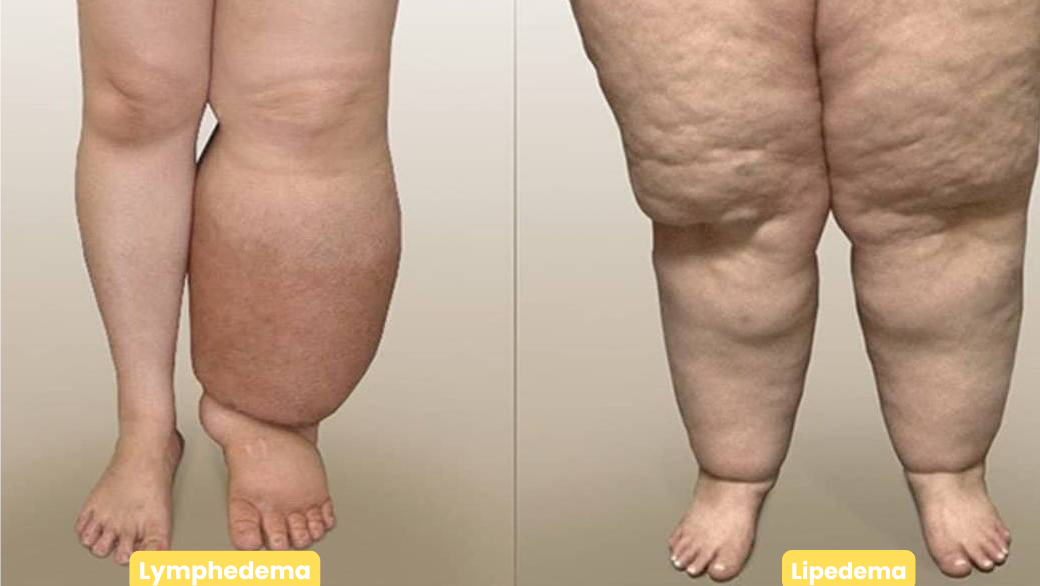
Lipedema vs. Lymphedema: Understanding the Key Differences
If you or someone you know suffers from swollen legs, it’s easy to assume it’s due to one condition. However, Lipedema and Lymphedema are two different diseases that often get confused because they can look similar. Both cause swollen legs and tissue changes, but understanding their differences is crucial for proper diagnosis and treatment.
What Is Lymphedema?
Lymphedema occurs when the body’s lymphatic system, which helps drain fluid from tissues, gets blocked or damaged. This can happen due to genetic issues (primary lymphedema) or following cancer surgeries, radiation, infections, or trauma (secondary lymphedema). Because the lymph vessels cannot drain properly, fluid builds up, causing swelling, inflammation, and thickening of the skin.
Common signs of lymphedema include:
– Persistent swelling (usually in one limb, but can be both)
– Skin changes, such as thickening, hardening, and a ‘peau d’orange’ (orange peel) texture
– A positive Stemmer’s sign—an inability to pinch the skin on the top of the foot or hand
– Feeling of heaviness or tightness in the limb
– In advanced stages, fibrosis (hardening of tissue) and fat accumulation
What Is Lipedema?
Lipedema is a lesser-known but common disease affecting mostly women. It involves abnormal fat accumulation in the legs (and sometimes arms), often starting around puberty, pregnancy, or menopause, suggesting a hormonal link. Unlike regular fat, this fat doesn’t respond to diet and exercise. Unlike lymphedema, hands and feet are typically spared, and there is no Stemmer’s sign.
Key signs of lipedema include:
– Bilateral (both sides) swelling of legs, sparing the feet
– Painful fat deposits that are tender to touch
– Easy bruising from fragile capillaries
– Fat that resists weight loss
– Joint hypermobility in many cases
Shared Features and Major Differences
Both conditions share fluid buildup (edema), fat tissue changes, and fibrosis (connective tissue thickening), but they differ in cause and progression:
| Feature | Lymphedema | Lipedema |
| Cause | Lymphatic system blockage/damage | Hormonal & genetic fat disorder |
| Onset | After surgery, trauma, infection | Puberty, pregnancy, menopause |
| Symmetry | Often, one limb (unilateral) | Both legs (bilateral), feet spared |
| Pain | Possible, often mild | Common, often severe |
| Bruising | Uncommon | Common |
| Stemmer’s Sign | Positive | Negative |
| Feature | Lymphedema | Lipedema |
| Cause | Lymphatic system blockage/damage | Hormonal & genetic fat disorder |
| Onset | After surgery, trauma, infection | Puberty, pregnancy, menopause |
| Symmetry | Often, one limb (unilateral) | Both legs (bilateral), feet spared |
| Pain | Possible, often mild | Common, often severe |
| Bruising | Uncommon | Common |
| Stemmer’s Sign | Positive | Negative |
| Response to Diet/Exercise | May reduce if fluid managed | No improvement |